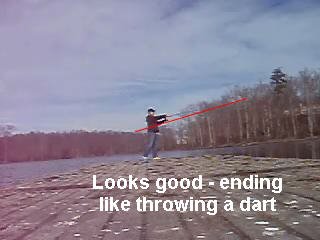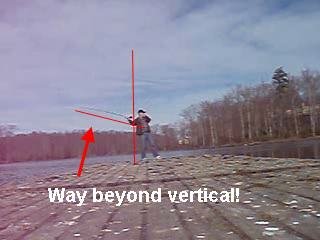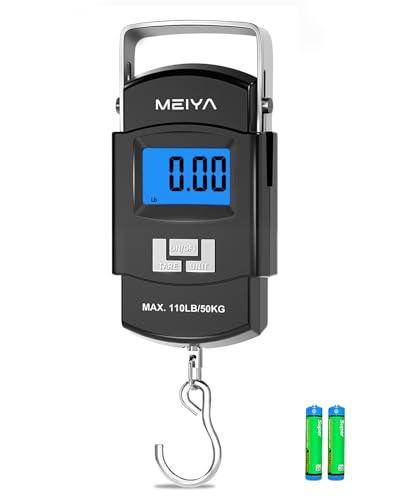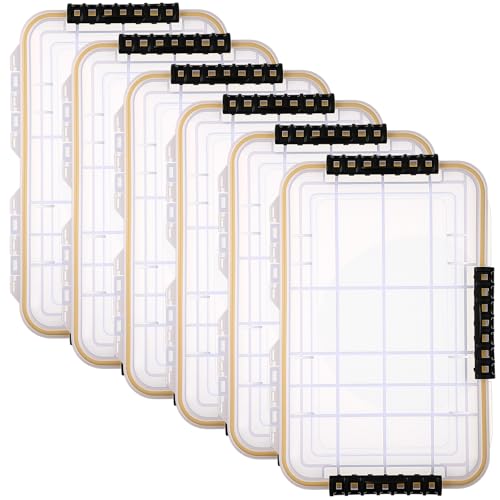
This example is a bit better. There will be some transition past vertical, but probably should not be as much as here. On this series of casts, I did not notice that the fly smacked the water to my rear, but I do think I was breaking my wrist even in this shot. I read on the Orvis beginner site, that the backcast should stop when the fly leaves the water – regardless of angle. The reason is that the rod quits taking on a load when the surface tension is broken. Makes sense – I’ll have to try that next time out as I also control the wrist action.

As bad as I am on the back cast, it looks like the forecast is coming together. The Lefty tape clearly described that the end of the cast should be like throwing a dart – not a downward motion. In addtion, the target is not the water, rather the water at eye level. It looked like I was working that aspect of the cast fine here, but wonder if I am putting too much effort into the completion. My leg lifts and I am pushing the rod hard to the front – actually inducing a bit of fatigue in the casting arm.
All this will get sorted out as I continue to work this and actually get a lesson when the weather warms up.
Unless stated otherwise, this article was authored by Steve Moore
Nothing like a little visual reality to bring you back to earth…
After getting my fly starter kit for Christmas, I’ve been able to get out and practice a bit on the few warm days. After the last practice, I was feeling pretty good about getting a handle on casting. The fly was not snagging my ear or putting my eye out, it appeared to be going out all the way and not landing in a clump of line, and I was not hearing the sonic boom on the back cast.
With the warm weather a weekend or so back, I decided to venture down to the Lake Ridge Park where I could actually practice on water – everything I have read or viewed to date indicates that water is actually different from grass – – who would have thought?
I had to dodge huge mounds of goose and bird poop to work my way to the end of the dock. Once positioned, I practiced for a while, getting the hang of the additional tension the water would load onto the line and then set up my digital camera in the movie mode to take a shot of my technique. When I looked at the results, I was horrified and delighted at the same time.

As you can see above, I am making the rookie mistake of most spinfishers who switch to flies. I am allowing my wrist to break on the back cast with the rod ending up almost parallel to the ground. The symptom I noticed, but did not connect until I looked at the video was that the fly would splash into the water on the backcast. Easy to see why here – the last motion of the rod forces the line down towards the water instead of creating a loop that shoots straight back.
Video – Bad Cast
Video – “Good” Cast

This example is a bit better. There will be some transition past vertical, but probably should not be as much as here. On this series of casts, I did not notice that the fly smacked the water to my rear, but I do think I was breaking my wrist even in this shot. I read on the Orvis beginner site, that the backcast should stop when the fly leaves the water – regardless of angle. The reason is that the rod quits taking on a load when the surface tension is broken. Makes sense – I’ll have to try that next time out as I also control the wrist action.

As bad as I am on the back cast, it looks like the forecast is coming together. The Lefty tape clearly described that the end of the cast should be like throwing a dart – not a downward motion. In addtion, the target is not the water, rather the water at eye level. It looked like I was working that aspect of the cast fine here, but wonder if I am putting too much effort into the completion. My leg lifts and I am pushing the rod hard to the front – actually inducing a bit of fatigue in the casting arm.
All this will get sorted out as I continue to work this and actually get a lesson when the weather warms up.
Unless stated otherwise, this article was authored by Steve Moore


